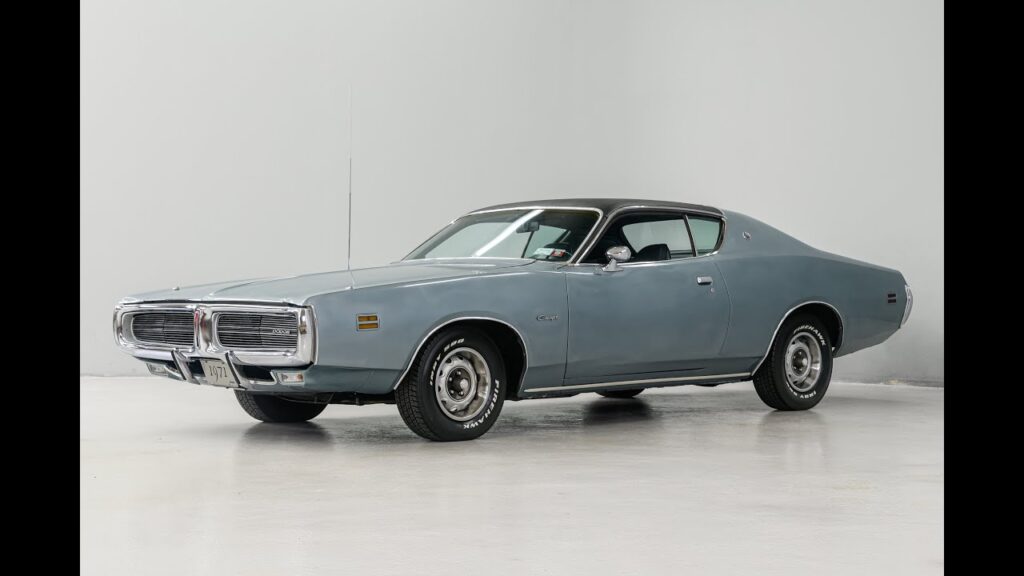The Dodge Charger, an iconic name in American automotive history, has been a symbol of power, performance, and style since its debut in 1966.
The “SE” on a Dodge Charger typically means Standard Edition, the base trim with a V6 engine and essential features. Historically, it also stood for Special Edition with premium styling.
This article dives into the meaning of the SE trim, its historical context, and how it compares to other Charger trims, drawing from a comprehensive analysis of available information.
The Meaning of SE: Standard Edition or Special Edition?
The SE designation on a Dodge Charger has been interpreted in two primary ways, depending on the model year and context: Standard Edition and Special Edition. Both interpretations have been used in automotive discussions, and the meaning can vary based on the Charger’s generation and market.
- Standard Edition: For most modern Dodge Chargers, particularly those from the 2006 revival onward, SE typically stands for Standard Edition. This trim represents the base model of the Charger lineup, equipped with essential features and a focus on affordability. The SE trim is designed to deliver the Charger’s signature style and performance at an accessible price point, often featuring a V6 engine and basic amenities like power windows, keyless entry, and a standard infotainment system. For example, the 2017 Dodge Charger SE was equipped with a 3.6-liter Pentastar V6 engine producing 292 horsepower, paired with an eight-speed automatic transmission, and offered features like dual exhaust and traction control.
- Special Edition: In earlier generations, particularly during the 1970s, SE was often used to denote Special Edition. This trim level added luxury features and unique styling to the Charger, setting it apart from base models. For instance, a 1970 Dodge Charger SE included premium features like leather seats, special hubcaps, turn signal indicators on the hood, and wood trim in the cabin. These enhancements catered to buyers seeking a blend of performance and sophistication.
The dual meanings reflect Dodge’s evolving marketing strategy. In the modern era, SE leans toward being the entry-level trim, while in earlier decades, it signified a more upscale, feature-rich version of the Charger.
Historical Context of the SE Trim

To fully understand the SE designation, it’s essential to explore its role across the Charger’s eight generations:
- First Generation (1966–1967): The original Charger, introduced in 1966, was a mid-size fastback based on the Chrysler B-body platform. While the SE trim wasn’t explicitly used, the Charger was positioned as a luxurious fastback with premium features like bucket seats and a full-length console, aligning with the Special Edition ethos.
- Second and Third Generations (1968–1974): During the late 1960s and early 1970s, the Charger gained fame for its muscle car prowess. The SE trim emerged in models like the 1970 Charger SE, which offered luxury touches like leather upholstery and woodgrain accents, appealing to buyers who wanted more than just raw power. These models were distinct from performance-focused trims like the R/T (Road/Track).
- Sixth Generation (2006–2010): After a 20-year hiatus, the Charger returned in 2006 as a four-door sedan on the Chrysler LX platform. The SE trim became the base model, featuring a 3.5-liter V6 engine (or a 2.7-liter V6 in some cases) and standard features like remote keyless entry and a six-way power-adjustable driver’s seat. The SE was often confused with the SXT trim, which was essentially an SE with additional options like heated seats and an 8.4-inch touchscreen.
- Seventh Generation (2011–2023): The SE trim continued as the entry-level option, powered by the 3.6-liter Pentastar V6. It offered a balance of performance and efficiency, with an EPA-estimated 19/30 MPG (city/highway) for the 2017 model. The SE remained a popular choice for budget-conscious buyers who still wanted the Charger’s aggressive styling and rear-wheel-drive dynamics.
- Eighth Generation (2024–Present): With the introduction of the all-electric Next-Gen Dodge Charger Daytona in 2025, the SE trim is no longer explicitly mentioned. Instead, trims like Daytona R/T and Scat Pack dominate, focusing on high-performance electrification. This shift suggests that Dodge may be moving away from the SE designation in its electrified lineup.
SE vs. Other Charger Trims
The SE trim’s role as the base model contrasts with higher trims like SXT, R/T, Scat Pack, and SRT Hellcat, each offering distinct features:
- SXT (Standard Extra): Positioned above the SE, the SXT adds luxury and convenience features, such as dual-zone climate control, heated seats, and larger wheels. For example, the 2017 Charger SXT had an MSRP of $29,995 compared to the SE’s $27,995, with enhancements like Bluetooth connectivity and Apple CarPlay. In some markets, like Canada, the SXT is a distinct model, but in the U.S., it’s often an SE with a preferred options package.
- R/T (Road/Track): The R/T trim emphasizes performance, typically featuring a V8 engine (e.g., the 5.7-liter HEMI V8 with 370 horsepower in the 2023 model). It includes sportier suspension and performance-oriented features like Launch Control, appealing to enthusiasts.
- Scat Pack and SRT Hellcat: These trims cater to performance purists, with the Scat Pack offering a 6.4-liter V8 (485 horsepower) and the SRT Hellcat boasting a supercharged 6.2-liter V8 (up to 807 horsepower in the Redeye Jailbreak). They include advanced features like Brembo brakes and adaptive suspension, far exceeding the SE’s capabilities.
Why Choose the SE Trim?
The SE trim appeals to buyers seeking the Charger’s bold aesthetics and reliable performance without the higher cost of premium trims.
Its V6 engine provides sufficient power for daily driving, and its standard features ensure comfort and convenience.
However, for those prioritizing luxury or high performance, the SXT or R/T trims may offer better value. The SE’s affordability makes it a popular choice for fleet vehicles, such as police models, and for buyers entering the muscle car market.
Common Misconceptions
A common point of confusion is the overlap between SE and SXT trims, especially in early 2000s models. Some owners, like one on ChargerForums.com in 2006, discovered their SXT was listed as an SE in VIN decodes due to shared engine platforms.
This reflects the SXT being an enhanced SE rather than a distinct model in some cases. Additionally, the historical use of SE as Special Edition can confuse buyers familiar with older Chargers expecting premium features.
What Does SE Mean on a Dodge Charger 2016?
On a 2016 Dodge Charger, SE stands for Standard Edition, the base trim. It has a 3.6L V6 engine, basic features like keyless entry, and cool styling, perfect for budget-friendly muscle car fans.
What Does SE Mean on a Dodge Charger 2015?
For the 2015 Dodge Charger, SE means Standard Edition. It’s the entry-level trim with a 3.6L V6, offering sweet looks, decent power, and basics like power windows for an affordable Charger experience.
What Does SE Mean on a Dodge Charger 2007?
On a 2007 Dodge Charger, SE stands for Standard Edition. This base model rocks a 3.5L V6, with features like keyless entry and a comfy interior, giving you Charger style on a budget.
What Does SE Mean on a Dodge Charger 2012?
The SE on a 2012 Dodge Charger means Standard Edition, the base trim. It comes with a 3.6L V6, cool design, and essentials like power seats, making it a great entry-level muscle car.
What Does SE Mean on a Dodge Charger 2021?
For the 2021 Dodge Charger, SE is the Standard Edition, the base model. It features a 3.6L V6, stylish looks, and basics like a touchscreen, offering affordable power for Charger enthusiasts.
What Does SE Mean on a Dodge Charger 2009?
On a 2009 Dodge Charger, SE means Standard Edition. It’s the base trim with a 3.5L V6, offering bold style, keyless entry, and solid performance for those wanting a budget-friendly Charger.
Dodge Charger SE vs SXT vs RT
The Dodge Charger SE is the base trim with a V6, SXT adds extras like heated seats, and RT brings V8 power. SE is affordable, SXT is comfier, and RT is for performance lovers.
SE Meaning Car Toyota
In Toyota cars, SE often means Special Edition or Sport Edition. It’s a mid-tier trim with sporty styling, enhanced features like alloy wheels, and sometimes a tuned suspension for a fun, stylish ride.
FAQs
What Does SE Mean for Dodge Charger?
SE on a Dodge Charger means Standard Edition, the base trim with a V6 engine, cool style, and affordable features.
What Does SE Package Mean?
The SE package on a Dodge Charger is the base model, offering a V6 engine, basic features, and bold styling.
What’s Better, SXT or SE?
SE is the base Dodge Charger; SXT adds extras like heated seats. SXT is comfier, but SE is more affordable.
What Engine Is in an SE Charger?
The Dodge Charger SE typically has a 3.6L V6 engine, giving solid power and efficiency for an affordable muscle car.
What Does SE Stand For?
SE on a Dodge Charger stands for Standard Edition, the entry-level trim with a V6 and basic, stylish features.
Conclusion
The SE designation on a Dodge Charger primarily means Standard Edition in modern contexts, serving as the base trim with essential features and a V6 engine. In earlier generations, it denoted Special Edition, offering luxury enhancements. Understanding the SE’s role requires considering the Charger’s evolution, from a 1960s fastback to a modern muscle sedan and now an electric powerhouse. Whether you’re drawn to the SE for its affordability or eyeing a higher trim for performance, the Charger remains a versatile icon that caters to diverse tastes. For the latest on Charger trims, visit Dodge’s official site or explore local dealership inventories.
